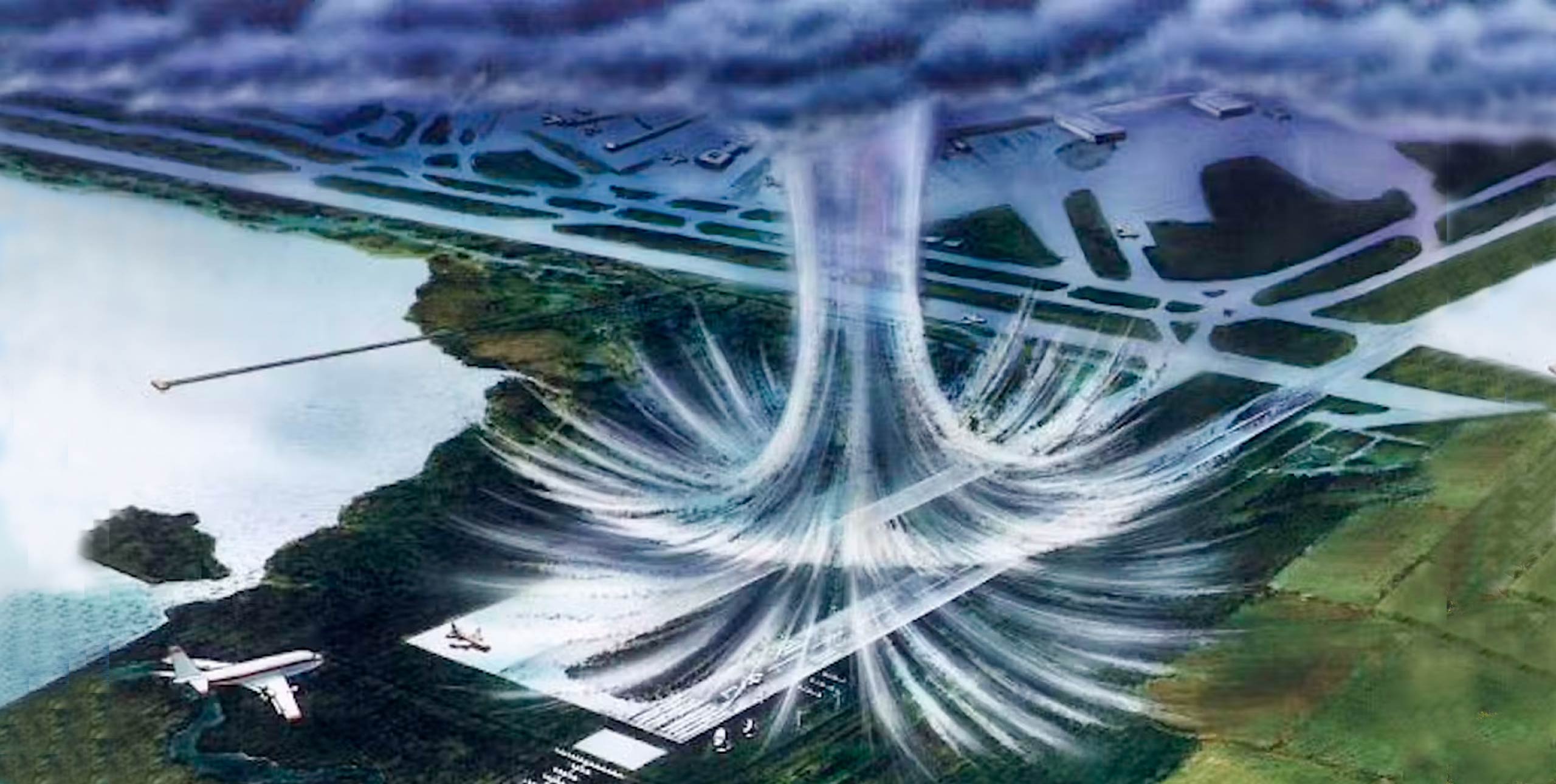From a distance, a downburst can look like a torrent of heavy rain. But at ground level, its behaviour can be far more destructive. When a downburst’s winds hit the ground, they fan out horizontally in all directions, sometimes with enough force to shatter windows and overturn vehicles.
These winds behave in complicated ways, particularly in cities, as our latest research shows. Downburst winds can deflect off tall buildings, increasing the pressure on neighbouring buildings’ windows and walls. The result can blow out glass and chip off facade. Even buildings designed to survive hurricanes can suffer major damage in a downburst.
As engineers, we study downbursts with the goal of designing buildings, components such as solar panels and windows, and infrastructure such as power lines that can stand up to that powerful force. To do this, informed by field measurements, we create our own powerful downbursts using a hurricane simulator known as the Wall of Wind at Florida International University.
What is a downburst?
Downbursts can be as destructive as tornadoes, but their winds develop in a very different way. A downburst forms when a thunderstorm pulls cooler, heavier air down from high in the atmosphere. As this...


